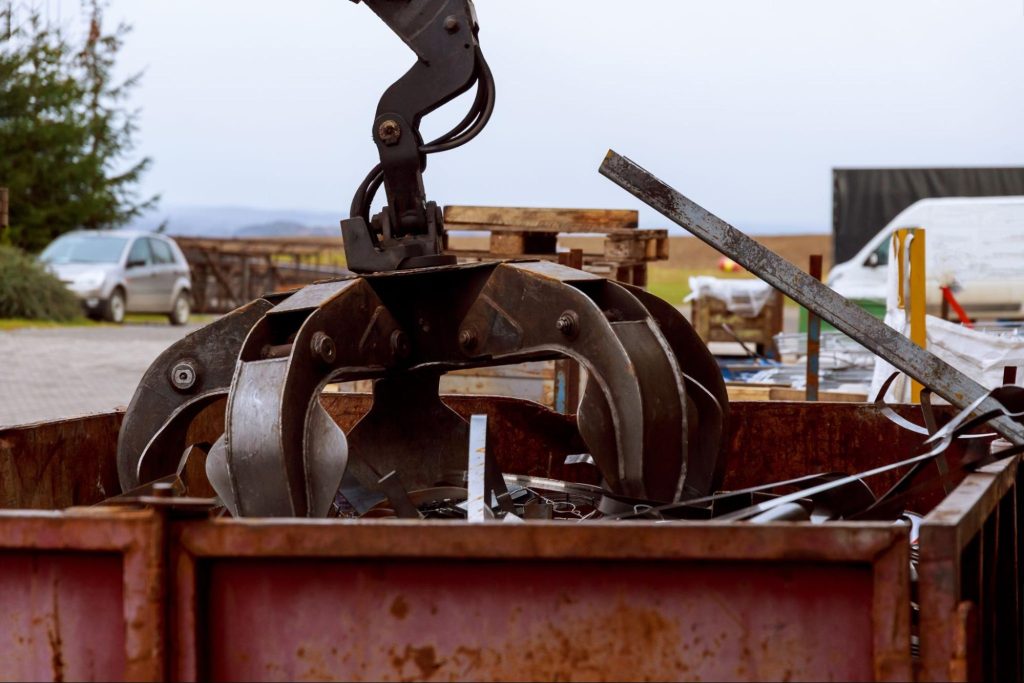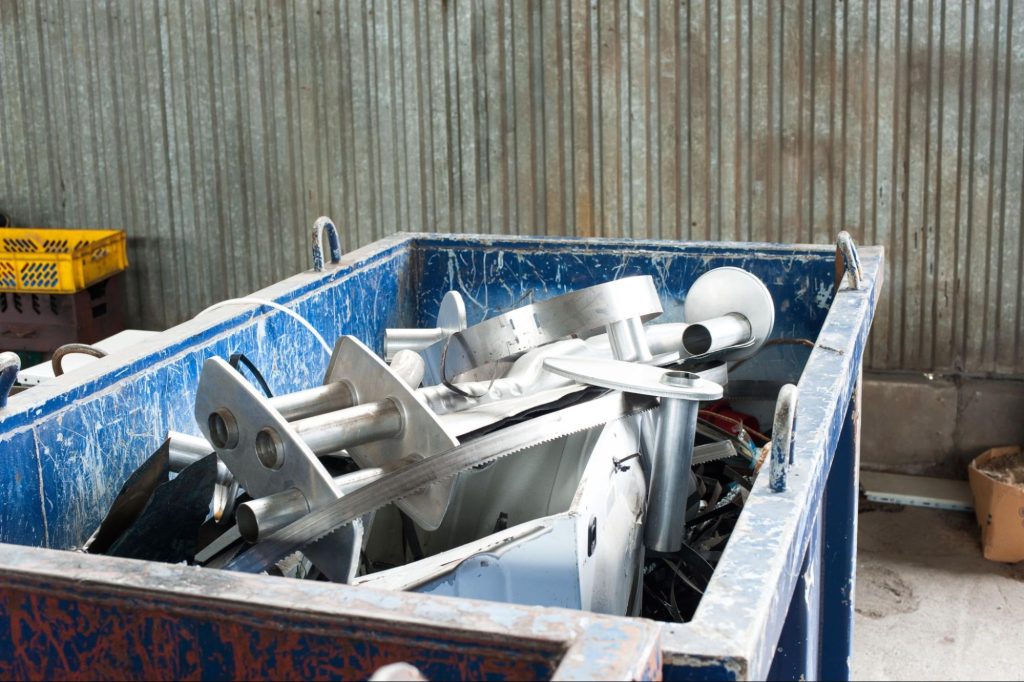Businesses that produce, handle, or dispose of metal waste often overlook its value. Scrap metal recycling transforms waste into profit by converting discarded metal into reusable material. It supports sustainability and bottom-line results for companies in manufacturing, demolition, construction, and facility management. Understanding how it works helps businesses reduce waste, meet regulatory requirements, and recapture lost resources.
Scrap Metal Recycling Defined for Businesses
Scrap metal recycling is the industrial process of collecting, separating, and reprocessing metal waste so it can be reused. This method diverts materials such as steel, copper, and aluminum from landfills and reintroduces them into the production cycle. For businesses, it reduces disposal costs and generates a consistent source of revenue. Recyclable scrap encompasses a wide range of materials, including leftover fabrication parts and outdated office equipment.
Types of Scrap Metal Found in Business Waste
Scrap metals are categorized into two main groups: ferrous and non-ferrous. Ferrous metals contain iron, including steel, cast iron, and wrought iron. These metals are widely used in construction, automotive manufacturing, and the production of heavy machinery. Non-ferrous metals contain no iron. They include copper, brass, aluminum, and stainless steel. These metals are commonly found in electronics, HVAC systems, and office fixtures. Non-ferrous metals are lighter, corrosion-resistant, and usually more valuable. Knowing the difference helps companies separate and sell more effectively. Sorting these correctly boosts price offers and speeds up processing time at recycling centers.
Metal Quality and Recycling Value
Metal grade affects resale value and processing cost. Clean, single-metal items are easier to recycle and command better prices. Contaminated metals mixed with rubber, plastic, or other substances require extra labor and reduce yields. For example, insulated copper wire is worth less until it’s stripped. Businesses can improve value by separating and preparing scrap before transport. Quality scrap means less downtime at recycling facilities and better rates.
Why Scrap Metal Recycling Is a Business Advantage
Scrap metal recycling offers direct financial benefits while supporting environmental and regulatory objectives. It reduces material costs, conserves natural resources, and demonstrates corporate responsibility. Companies that recycle also avoid rising landfill fees and disposal challenges. With proper systems, recycling becomes a smooth part of business operations.
Scrap Recycling Cuts Energy and Resource Use
Recycling metals uses much less energy than producing new ones. For instance, recycling aluminum uses 95% less energy than extracting it from bauxite. Steel and copper also require far fewer resources when recycled. This efficiency lowers carbon emissions, reduces water usage, and prevents mining-related environmental damage. Companies save on raw material costs while improving environmental performance. Recycling also aligns with carbon-reduction targets in sustainability reporting.
Financial Benefits for Industrial Operations
Businesses in manufacturing, construction, and property management regularly generate scrap metal. This waste often holds untapped value. Instead of treating it as waste, companies can turn it into an income stream. Many recyclers pay competitive rates for sorted ferrous and non-ferrous metals. These funds can offset production costs or be reinvested into operations. Scrap metal also cuts hauling and disposal expenses. Over time, recycling becomes part of a circular business model that supports growth.
Less Landfill Use, Lower Environmental Risk
Discarded metal doesn’t belong in a landfill. It takes decades to degrade and contributes to soil and groundwater contamination. Recycling helps prevent that by keeping usable materials in circulation. It also frees up landfill space for non-recyclable waste. Businesses benefit from fewer environmental liabilities and better public perception. Clients and partners increasingly prefer working with companies that recycle responsibly.

Scrap Metal Recycling Process Explained Step-By-Step
Scrap metal recycling involves five key steps: collection, sorting, processing, melting, and redistribution. Each step transforms waste metal into a new resource. Understanding how the system works helps businesses participate more effectively. It also ensures they meet compliance standards and get the most value from their materials.
1. Collection and On-Site Scrap Sorting
Scrap is gathered from production floors, storage areas, or demolition sites. Collection can be handled by internal teams or contracted out to a local recycler. Once gathered, metals must be separated by type, ferrous from non-ferrous. Magnetic tools help identify iron-based metals. Optical scanners and eddy current separators help further sort non-ferrous materials. Clean, separated scrap is easier to sell and recycle.
2. Cleaning and Preparing Materials for Processing
Before recycling, scrap materials must be free of contaminants such as oil, dirt, rubber, and plastic. Copper wires may need their insulation stripped, and aluminum parts may require cleaning. Some facilities charge extra for dirty or mixed loads. Clean scrap is safer to process and results in higher-quality material. Businesses that prepare materials in-house often receive better rates. This step also prevents mechanical issues that can occur during melting.
3. Shredding, Compacting, and Size Reduction
After preparation, large pieces of metal are shredded into smaller, uniform parts using industrial crushers and shredders. Smaller pieces are easier to melt and transport. Compacting machines press metals into manageable blocks, reducing storage space and speeding up delivery to smelters. The goal is to streamline the melting and refining stages.
4. Melting, Refining, and Purifying Metals
Each type of metal is melted in a specialized furnace to match its melting point. For example, copper melts at around 1,984°F, while aluminum melts at about 1,220°F. During melting, impurities float to the top and are skimmed off. Refining ensures the final metal is clean and ready for reuse. Purified metal is poured into molds or cooled into bars. It’s then sold to manufacturers for new production.
5. Distribution Back into the Manufacturing Loop
Once cooled, metals are sorted, stored, and transported to buyers. These can be construction firms, factories, or other industrial users. Scrap becomes part of new appliances, cars, machines, or infrastructure. This circular economy keeps materials in use and waste out of the ground. Businesses that recycle regularly become part of a larger sustainable supply chain. They also gain access to a broader network of buyers and sellers.
Scrap Metal Sources Common to Business and Industry
Scrap metal isn’t limited to heavy industry. Many commercial spaces and business operations generate recyclable waste daily. Recognizing these sources helps companies manage waste streams and increase recycling profits. Small items add up quickly when tracked and separated consistently.

Manufacturing Scrap and Shop Floor Leftovers
Fabrication and machining shops generate waste daily from offcuts, trimmings, and rejected parts. These are often thrown away or mixed with trash. However, even small shavings and punch-outs can be recycled. Regular collection enhances safety and maintains a clean workspace. Over time, consistent recycling creates additional revenue. Many recyclers offer custom bins for high-output clients.
Construction Waste and Demolition Material
Construction sites produce scrap through cut steel beams, aluminum siding, copper wiring, and metal piping. Demolition jobs yield large quantities of heavy scrap, like HVAC units and sheet metal. Recycling this material reduces hauling costs and keeps jobsites cleaner. It also avoids landfill tipping fees. It can improve profit margins and project sustainability ratings for developers and contractors.
Office Equipment and Facility Fixtures
Offices and commercial buildings generate large amounts of recyclable metal. Old desks, metal shelving, lighting fixtures, and filing cabinets often get discarded during upgrades. These items contain valuable metals like aluminum and steel. By recycling, businesses can save on removal costs instead of hauling everything to the landfill. Many waste management solutions now include metal recovery services as part of their disposal plans. That helps businesses stay compliant, reduce waste, and recapture value from everyday materials.
Scrap Metal Recycling Challenges to Know
Recycling has clear benefits, but it also comes with challenges that businesses must prepare for. These include fluctuating prices, contamination issues, and handling logistics. Recognizing these obstacles enables companies to plan more effectively and avoid unnecessary expenses. A consistent recycling system minimizes disruptions.
Mixed or Contaminated Loads Reduce Value
Metal with plastic, wood, or hazardous coatings often gets downgraded. That means lower payouts and extra disposal fees. Mixed metals also require manual separation, which slows processing. Investing in better sorting at the source improves outcomes. Contaminated scrap may even be rejected entirely. Training staff on what’s recyclable avoids these issues.
HPrice Changes Affect Scrap Metal Profitability
Like all commodities, scrap metal prices shift based on market conditions. Global demand, shipping rates, and trade restrictions influence value. Businesses should avoid depending on high short-term returns and view scrap recycling as a long-term cost-reduction tool. Building strong supplier relationships helps navigate market fluctuations. Some recyclers offer volume contracts to lock in pricing.
Storage, Transportation, and Handling Costs
Some businesses lack the space to store bulk scrap safely, while others incur significant expenses transporting small or unprepared loads. Working with a local recycler that offers pickup or drop-off bins solves this issue. Consolidating shipments lowers fuel and labor costs. Investing in compactors or shredders can also be beneficial. These tools streamline handling and improve the bottom line.
Start Scrap Metal Recycling for Long-Term Gain
Every scrap load that is not recycled is a missed financial opportunity. With proper systems, businesses reduce waste, boost revenue, and support sustainability goals. Recycling turns waste into product, clutter into cash, and responsibility into strategy. Many local recyclers also offer metal recycling pickup service, making the process more convenient for commercial operations. Start separating, collecting, and monetizing your scrap before your competition does. The sooner it’s part of your workflow, the greater the returns.
Want more insights on recycling and waste strategies? Explore the Top Dog Waste Solutions blog for expert tips and industry updates.








